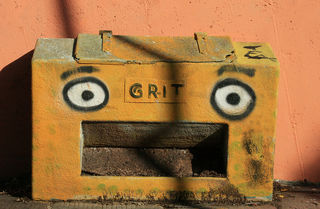
Should engineering schools require courses in philosophy or history? Should premed curricula include a module in the visual or performing arts? These questions point up a more sophisticated line of inquiry—a study already under way at the National Academies of Sciences, Engineering, and Medicine. Led by Smithsonian Institution Secretary David Skorton, MD, an Academies committee is weighing evidence for whether and how the arts and humanities should be integrated with science, technology, engineering, and medicine in places of higher learning.
At its most basic level, the study is about the value of a traditional liberal arts education. It’s about fusing arts and science learning experiences not only for undergraduates, but also for students in graduate and professional schools.
Earlier this month, I attended public sessions of the Academies’ committee meeting in Washington, D.C. Richard Miller, president of Olin College of Engineering, described his school’s impressive efforts to bridge academic disciplines in the wake of employer demands for greater creativity, communication skills, empathy, and teamwork. Robert Root-Bernstein, a professor of physiology at Michigan State University, reviewed findings from several small studies about the benefits of arts, crafts, and design for science learning.
As tantalizing as it is to consider how colleges and universities, in the future, might unloose versatile graduates to gratify the cravings of prospective employers, I found myself wondering: what can the science of learning (as distinct from the learning of science) teach us about artistry as a pedagogical force—about artistic ways of knowing and judging—regardless of the disciplines being taught?

To find out, I didn’t have long to wait. The very next week I was scheduled to attend “Grit + Imagination: An Educator’s Summit in Honor of Jack Templeton” [former chairman and president of the eponymous foundation]. Held in Philadelphia, the meeting brought together K-12 and postsecondary school educators with psychologist-researchers from the Imagination Institute and the Character Lab, both housed at the University of Pennsylvania’s Positive Psychology Center.
I once had given a lunchtime talk to the U-Penn center, and I’d had a couple of hearty chats with its founding director, Marty Seligman. But here was my chance to see his theories, and those of his colleagues, serve academic teaching. Seligman told attendees about the International Positive Education Network and about research that staff member Alejandro Adler has conducted in several schools abroad, using positive-ed. teacher training and curricula.
Cognitive neuroscientists Scott Barry Kaufman—co-author of Wired to Create, and the Imagination Institute’s scientific director—and Mary Helen Immordino-Yang of the University of Southern California explained how teachers can tap the social and emotional needs of students (even a healthy urge to daydream) to make them better learners. And renowned creativity-researcher Robert Sternberg of Cornell University gave results from a series of experiments to introduce assessments of creativity as part of the college admissions process.
What does all this have to do with arts and humanities education? Admittedly, none of the U-Penn speakers singled out either topic as central to their theories, research instruments, or study findings. And yet, the virtues discussed in Philadelphia—above all, “passion and perseverance,” in the words of Angela Duckworth, proponent of grit psychology and author of the related bestseller—are braided throughout many an artist’s career. Might it be not said, in fact, that a successful education in the arts includes, a priori, a heightening of the same attributes that the Grit + Imagination speakers celebrated? Or does superlative training in any academic discipline permit these capacities to flourish, and do the arts have no unique purchase on them? Such questions need disentangling before we can claim a special relationship between the arts and greater creativity and tenacity in learning.

